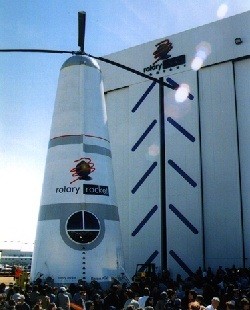For many many people space tourism and even colonisation are attractive ideas. But in order for these to start we need vehicles that will take us to orbit and bring us back.
Current space vehicles clearly cannot. Only the Space Shuttle survives past one use, and that's only if you ignore the various parts that fall off (intentionally!) on the way up.
You could be forgiven for thinking that space is therefore an impossibly expensive place to get to. But this need not be the case. Launch to orbit requires accelerating to Mach 26, and so it uses a lot of propellant - about 10 tons per passenger. But there's no technical reason why reusable launch vehicles couldn't come to be operated routinely, just like aircraft. The only reason why this hasn't been done yet is that launch vehicle development has been left to government space agencies. And they have had neither the priority nor the will to achieve it - they don't use even 2% of their budgets (of $25 billion per year) to study the design of launch vehicles suitable for passenger service!
So it may well turn out to be private enterprise that is the solution - plenty of ideas for reusable launch vehicles exist, and with incentives like the X-Prize, there's going to be fierce competition to see who can be first.
Space Vehicles presents some of the ideas that could change the meaning of "Space" from being a remote place where government staff carry out "missions" to being a weekend destination, just a few minutes' flight away.
- 29 July 2012
- Added "Space Debris and Its Mitigation
" to the archive.
- 16 July 2012
- Space Future has been on something of a hiatus of late. With the concept of Space Tourism steadily increasing in acceptance, and the advances of commercial space, much of our purpose could be said to be achieved. But this industry is still nascent, and there's much to do. So...watch this space.
- 9 December 2010
- Updated "What the Growth of a Space Tourism Industry Could Contribute to Employment, Economic Growth, Environmental Protection, Education, Culture and World Peace
" to the 2009 revision.
- 7 December 2008
- "What the Growth of a Space Tourism Industry Could Contribute to Employment, Economic Growth, Environmental Protection, Education, Culture and World Peace
" is now the top entry on Space Future's Key Documents list.
- 30 November 2008
- Added Lynx
to the Vehicle Designs page.
To receive announcements and news of updates by email, subscribe to the sf-announce mailing list.
Join the sf-discuss mailing list to ask questions and talk about space tourism, vehicles, power, and habitats.
More InfoHere are some key documents from the archive to get you started:
- What the Growth of a Space Tourism Industry Could Contribute to Employment, Economic Growth, Environmental Protection, Education, Culture and World Peace
- Space Tourism Market Demand and the Transportation Infrastructure
- General Public Space Travel and Tourism
- Artificial Gravity and the Architecture of Orbital Habitats
- Prospects of Space Tourism
More Documents
In order for people to be able to travel economically to space, for space tourism and for other purposes, we need reusable launch vehicles. All commercial transport industries use reusable vehicles - and so will the commercial space transport industry. Luckily research aimed at developing low-cost reusable launch vehicles has increased recently - though total funding is still barely 2% (!) of government funding for space activities.
The following is a list of projects under way today and some significant projects of the past. Some are aimed initially at sub-orbital flights - a much easier target than getting to orbit, as demonstrated by SpaceShipOne. Others are designs for orbital vehicles. Ultimately, the only ones of importance are the piloted, passenger-carrying vehicles.
|
SPACESHIPONE WHITE KNIGHT |
Winner of the $10m Ansari X-Prize SpaceShipOne The spaceplane is carried under the belly of Scaled Composites The White Knight Before reentry, the pilot raises SpaceShipOne |
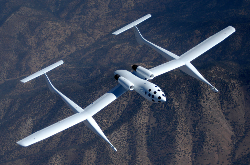
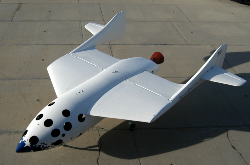

|
|
| SPACESHIPTWO WHITE KNIGHT TWO |
SpaceShipTwo Following on from SpaceShipTwo |
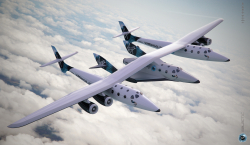
|
|
KANKOH-MARU |
A passenger-carrying reusable
SSTO Based loosely on earlier designs such as the "
Phoenix (In Japanese, "Kankoh" means tourism, and "Maru" means circle, symbol of Japan. Most ships are called "Something-Maru" so
Kankoh-maru |
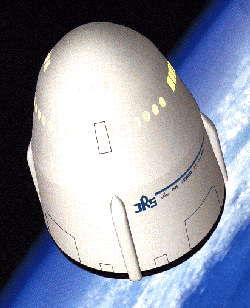 |
| DRAGON FALCON 9 |
SpaceX Dragon The intended use for the combined vehicle is primarily to serve as a replacement for the Shuttle fleet after their retirement, so space tourism is not an overt goal. Unlike vehicles aimed explicitly at the space tourism market, the Dragon |

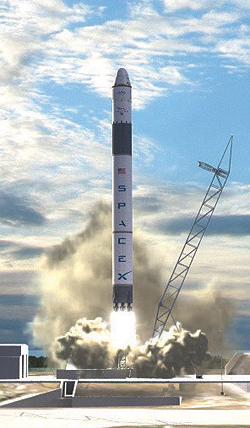
|
| NEW SHEPARD |
A suborbital
VTOL The New Shepard |
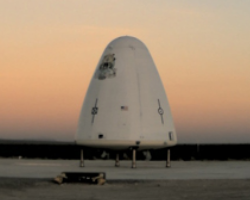 |
| ASCENDER |
Ascender |
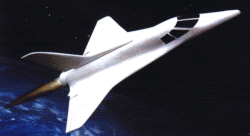 |
|
| SPACEBUS SPACECAB |
Spacebus Spacecab |
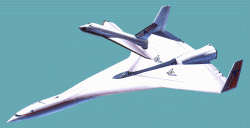 |
| MICHELLE-B |
Michelle, or 'Modular Incremental Compact High Energy Low cost Launch Experiment', is a manned reusable sub-orbital
SSTO By aiming at the sub-orbital market first, Michelle aims to bridge the gap to more expensive orbital vehicles by allowing the necessary technology to be developed incrementally. |
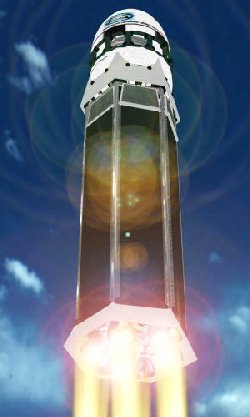 |
| ASTRIUM SPACE JET |
EADS Astrium The Astrium
|
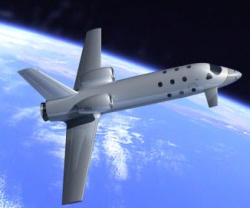 |
|
BSC |
BSC Spaceship The
BSC Spaceship |
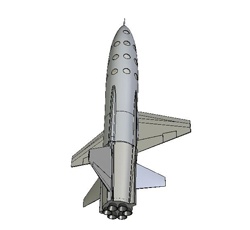 |
| BLACK ARMADILLO |
Armadillo Aerospace The rocket, dubbed Black Armadillo The pilot and two passengers sit with their backs to the nosecone. This unusual position is taken to ensure that the occupants encounter reentry deceleration on their backs as the vehicle reenters the atmosphere nose first. Ascent acceleration is considered by Armadillo Aerospace The rocket lifts off vertically, and at burnout coasts up to 100 km (62.5 miles). The rocket makes a nose-first reentry, with foam insulation protecting the aluminum nose section from reentry heating. A drogue chute frees the main parachute, and landing is cushioned by an expendable aluminum nose cap that compresses on touchdown. |
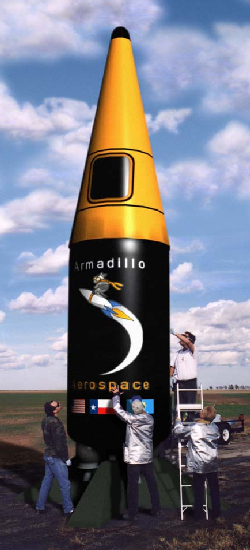 |
| KELLY ECLIPSE |
Another approach to the problem of achieving
HTOL |
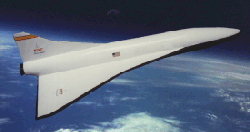 |
| SPACECLIPPER |
The SpaceClipper SC-1 The SC-1 A follow-on fully orbital spaceplane dubbed SC-2 is also proposed, building on the experience gained in developing and operating the SC-1 |
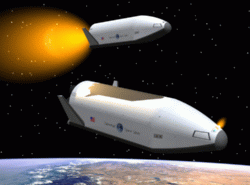 |
| XERUS LYNX |
Xerus XCOR XCOR |

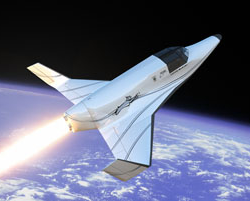
|
|
ALPHA |
The
Alpha Project Interestingly, three potential configurations for the lower stage (or launch vehicle) are being proposed as development proceeds: The first is an Air Launched Horizontal Landing (ALHL) solid rocket booster
RLV The second is a
HTOL The third is a
VTOL
World Aerospace, Inc. |
 |
| BLACK HORSE PATHFINDER |
An innovative
HTOL Rocketplane XP |
 |
| KISTLER K-SERIES |
A concept for a series of
VTOL In 1997 Kistler Aerospace Pioneer Rocketplane |
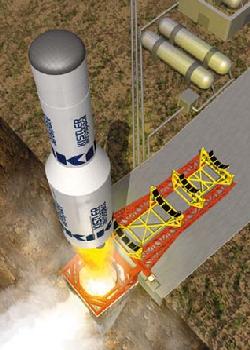 |
| THUNDERBIRD |
Thunderbird The vehicle uses existing off-the-shelf components wherever possible to minimize development cost, combined with an advanced composite for the airframe. The primary propulsion is provided by
LOX The Thunderbird |
 |
|
| NOVA |
Nova |
 |
|
| STAR BOOSTER |
Fully reusable
VTOHL |
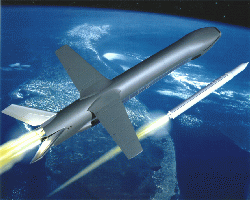 |
| SPACE ACCESS |
A
TSTO The second stage, which can use one of several different configurations, is contained inside the first and released at high altitude. |
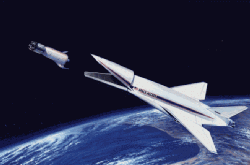 |
| CANADIAN ARROW |
The Canadian Arrow The first stage is a liquid propellant stage whose aerodynamic shape and thrust chamber are closely based on the V2 rocket, which was also the basis for the Mercury rocket used by Alan Shepard. It boosts the vehicle to the edge of space at a maximum of 4.5G acceleration before detaching and falling back for a parachute-slowed splashdown and recovery. To assist in recovery, the first stage has a natural positive buoyancy achieved without the use of floatation gear. The second stage uses solid rocket engines to rise to an eventual maximum altitude of approximately 70 miles. It is also designed to be an escape pod and can be separated from the first stage at any point, including the launch pad in an emergency. In normal flight, it will reenter the atmosphere using a reentry ballute and three main parachutes to make its own splashdown roughly 15 miles down range. |
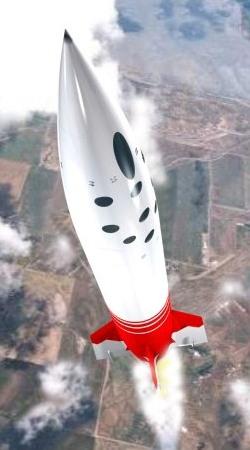 |
|
CXV |
The
CXV Like SpaceX |
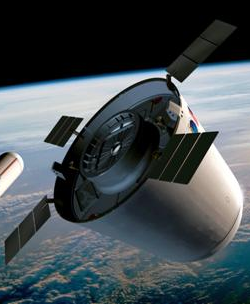 |
|
XA-1.0 |
The XA (
eXtreme Altitude |
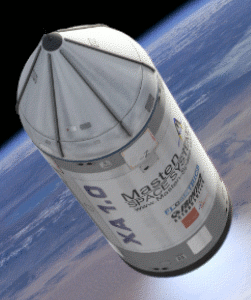 |
| DAVINCI |
daVinci Reentry and landing is achieved by deploying first an inflated shuttlecock for stability and then a protective inflated cone to shield the engines and cushion the landing. A parachute is deployed at 10,000 ft, slowing daVinci An interesting feature of the vehicle is the use of external cameras to track the vehicle both on the way up and on reentry. |
 |
|
COSMOPOLIS |
The
Cosmopolis XXI The first stage carrier is the M-55X "Geophysika", which will climb to a 17km altitude before ascending at a steep angle to 20km where the second stage
Cosmopolis XXI The
C-21 |
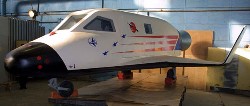 |
|
STAR-RAKER |
Proposed by
Star-Raker Low altitude engines comprise of ten supersonic multi-cycle airbreather ramjets, based on current existing technology, that lift the vehicle to 100,000ft at a speed of Mach 6 from take off at a conventional commercial airport, at which point rocket propulsion takes over. The aeroshell is a tri-delta form with Whitcomb airfoil lifting sections that provide a high volume for
LOX A smaller potential X-Prize |
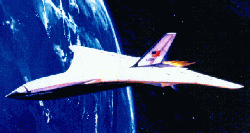 |
| KITTEN |
Kitten As well as being a potential X Prize |
 |
|
| CALICO ANGORA |
Two larger versions of the vehicle are also proposed for the future: Calico |
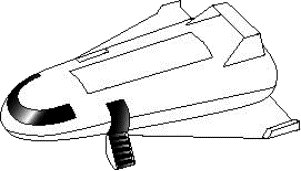 |
|
| SPACE CRUISER SYSTEM |
SCS Zegrahm ultimately expects to be able to fly two flights a week whilst the vehicles are being designed to be capable of upto two flights a day. Space Cruiser ® and Sky Lifter ® are registered trademarks of Vela Technology Development, Inc. |
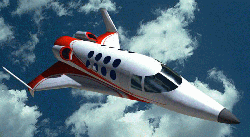 |
| POGO |
As an example of how airbreathing engines could be used, the
Pogo |
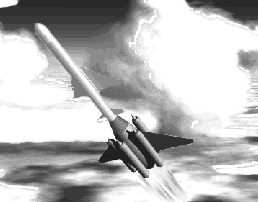 |
| SKYLON |
SKYLON is the successor to
HOTOL |
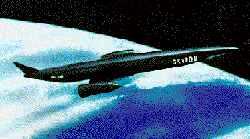 |
| SPACECUB |
An unusual and innovative strategy, SpaceCub |
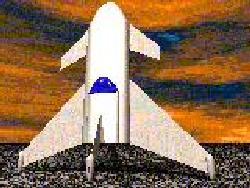 |
| SPACE VAN |
The Space Van |
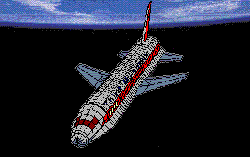 |
| DELTA CLIPPER (DC-X DC-XA |
The Delta Clipper Having inherited the project from the DoD, NASA It's notable that, apart from its computers, the DC-X |
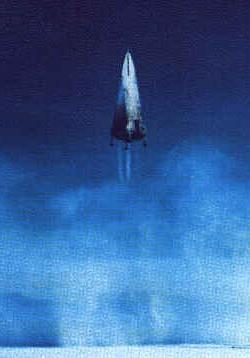 |
| CAC-1 |
A sea-launched sub-orbital
VTOHL |
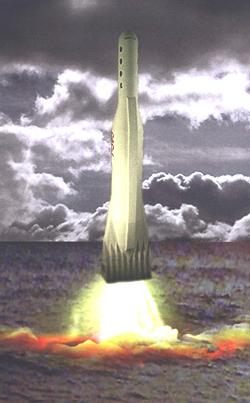 |
|
 |
|
SASSTO |
A piloted, reusable
SSTO
SASSTO |
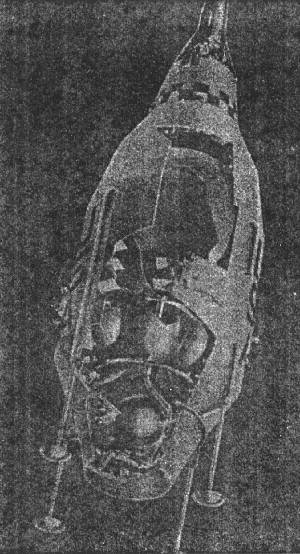 |
|
COSMOS MARINER |
A technologically advanced 4 passenger
SSTO |
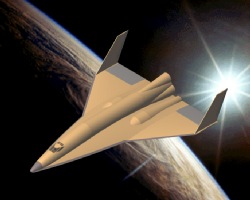 |
|
BETA |
A design for a reusable
SSTO |
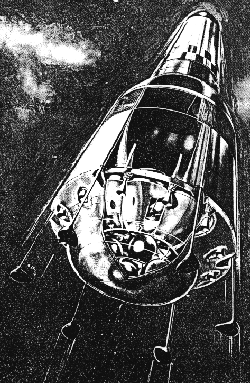 |
|
HOTOL |
In 1984, British Aerospace proposed the
HOTOL The concept eventually gave way to Interim
HOTOL |
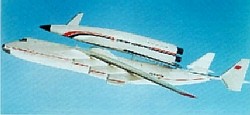 |
|
SSX |
The Space Ship Xperimental was a modified version of the
Phoenix |
 |
|
X-33 |
The "
X-33 The plan was very soon after scaled back to reach only Mach 8, and then cancelled in 2001 after NASA |
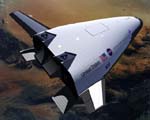 |
| VENTURE STAR |
A supposedly commercial follow-on to the
X-33 |
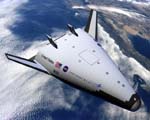 |
|
X-34 |
The [an error occurred while processing this directive]X-34[an error occurred while processing this directive] By contrast, the piloted, reusable [an error occurred while processing this directive]HTOL[an error occurred while processing this directive] |
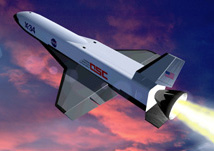 |
"Spaceplanes" that take off like an aeroplane and fly to orbit have been a dream of some space engineers and science fiction writers for decades. Expendable [an error occurred while processing this directive]SSTO[an error occurred while processing this directive] [an error occurred while processing this directive]VTOL[an error occurred while processing this directive]
vehicles are simple to design using existing components (see "A Single-Stage-to-Orbit Thought Experiment
"). By contrast, reusable [an error occurred while processing this directive]SSTO[an error occurred while processing this directive]
[an error occurred while processing this directive]HTOL[an error occurred while processing this directive]
vehicles aren't technologically possible today. Today, the competition is beteen [an error occurred while processing this directive]VTOL[an error occurred while processing this directive]
[an error occurred while processing this directive]SSTO[an error occurred while processing this directive]
designs like [an error occurred while processing this directive]Kankoh-Maru[an error occurred while processing this directive]
and New Shepard
and two-stage spaceplanes like SpaceShipTwo
/White Knight Two
. [an error occurred while processing this directive]VTOL[an error occurred while processing this directive]
designs have the appeal of a single stage which avoids the engineering issues of in-flight separation. Spaceplanes have the advantage of a large legacy of practical aviation experience to draw on, and an easier fit with existing airport operations and regulations.
Although, in future, new-technology air-breathing rocket engines may come to be used for some part of passenger launch vehicles' flight to orbit, it's difficult to make a convincing case that vehicles using technology that doesn't exist yet will be competitive with ones using known technology for at least the next few decades. Henry Ford didn't wait for the V-8 engine to be invented and developed before he started selling cars!
See Rockets versus Planes for more on this ongoing debate. [an error occurred while processing this directive] [an error occurred while processing this directive]



